
Two half centuries of Port a 2-part series and the first half was filled with oldies, the 1920’s through 1960’s. Part 1 can be found here. It is known that over the course of recent centuries, there have been on average three Vintage Port declarations per decade. If you could afford a bottle from the 1920’s, where we began in Part 1, what were some of the great Ports? For the sake of those Port wine fanatics who seek outstanding and well-aged Vintage Ports, (or Single Harvest Tawnies) which are some of the all-time greats?
Before you begin the read, go grab a bottle of Port, a cork screw and a glass … and maybe a decanter too. As here in Part 2, we take a run through history by decade, beginning with the 1970’s. You will learn some of my personal faves that are likely to cause moments of agreement and some disagreement too. Let’s get this party started. I’ll be using stream-of-consciousness to do this. In reality this just may be the most useful article for FTLOP subscribers that ever graced the pages of this newsletter. Quite literally it can be used by Port enthusiasts, whether beginners or experts, as a comprehensive buying guide for Vintage Ports from the past 50 years! You may be surprised that I won’t be doing any soft peddling and will speak about vintages good and bad.
The “Me Decade” of the 1970’s
Historic moments: Bangladesh, Vietnam War & protests, Watergate/Nixon resignation, Portugal’s decolonization and Revolution, Oil Crisis, Women’s Lib and Gay Rights, Elvis and other huge Rock n’ Roll deaths, disco & reggae take off, AFC/NFC merger = NFL, Camp David, Israel and Egypt peace begets Sadat assassination, it all ended with the Ayatollah Khomeini & Iran and the American Hostage Crisis, plus the UK elects Margaret Thatcher as the 1st female PM.
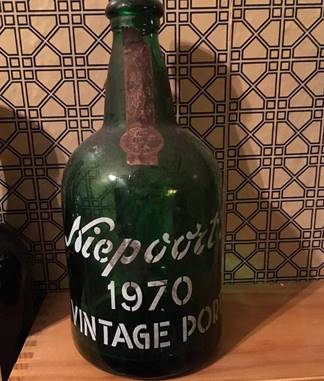
Slim pickings when it comes to Vintage Ports, as really there were only 1970 and 1977 for general declarations and I am not forgetting 1975, which created a few good Ports too. Notable moments: bulk shipments and bottling outside of Portugal came to a screeching halt; a scandal in 1972-1973 with the aguardente used for Ports found by a German laboratory to be nearly identical to antifreeze.
1970 is one of the great “benchmark” vintages of the 20th century. Today, there are still loads of excellent VP’s from this exalted harvest. Fonseca is nearly impossible to beat, but Graham’s, Feist, Niepoort, Dow’s (best bottles), and Taylor’s are all phenomenal and the Noval Nacional is off-the-charts. It was the kind of year, where if you wound up producing an underwhelming Vintage Port, you realized that it was time to try another way to make a living.
Given only seven years between them, an argument can be made that 1970 is as good (some have said, “better”) than 1963, and certainly when it comes to age-worthiness. Of course, there are lots of people that may disagree with this, however, all but a half dozen 1963 Vintage Ports are on the downward side of the mountain peak, with either fruit fading or turning to tawny.
Not so with 1970. While I can only think of one that could possibly still be considered a vibrant and mostly primary VP, (Nacional) the other aforementioned Shippers made extraordinary Ports that can be categorized as still lively, as well as excellent, at a half century of age. They may not be able to improve from here, but all that were mentioned will continue to gain complexity and most will still drink very nicely at 65 and several at 75. I’d add Gould Campbell and Ferreira in the very solid range, and just behind those three would be Warre’s, Croft and Cockburn’s. I have not had a lot of 1975’s in recent years, so my impressions of that vintage are mostly outdated.
Fonseca was tops for me, while Dow’s, Sandeman and Ferreira also made fine versions, but I can’t think of any others that I have tasted, that really stood out in a major positive way.
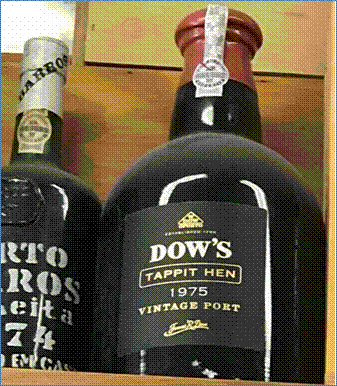
1977 on the other hand, seemed to be outstanding a decade ago, but now there’s an extreme issue with bottle variation qualitatively, and also with some significant incidence of TCA infection, that’s rarely mentioned when this vintage is discussed. Others believe it to be far worse than I’ve experienced, but I will only speak for myself. Solely as an example: you can have two bottles of Taylor’s and another two of Fonseca and it seems one of each will be dark ruby and
still nearly opaque at the core, and the very next bottle can vary, exhibiting the anthocyanins precipitating out of solution. I’ve experienced both in the USA and when visiting their properties as well. It should be noted that these are definitely NOT lone examples; meaning other shippers have similar issues. This seems to be endemic of the vintage, but there are also many fine Ports.
To be clear, when you come across perfect bottles of the Fonseca and/or Taylor, for me, they are at the apex of the vintage. If looking for pure dark extraction levels, the two remaining darkest of the ’77 vintage would be Smith Woodhouse, followed by Gould Campbell. Between those, SW is the darkest and GC delivers more layers of complexity and typically wins the overall battle. Similarly, if you come across great bottles of ’77 Dow’s, it also rocks the casbah, but has its own issues with TCA, and finding perfection may require opening a couple of bottles. Caveat emptor! There are a few very good bottles of SQVP from 1976 and 1978, but clearly the Port trade chose 1977 for a good reason; even ripeness and excellent structural components. For wood-aged Ports there are a few 1974’s that are worthy too, but beyond 1976, this decade was not as well known for their Single Harvest Ports, though 1977 had a few as well and even 1979 had some.
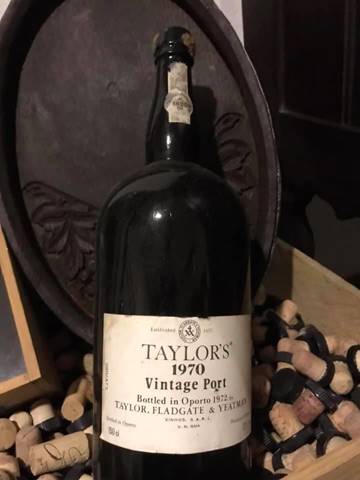 |
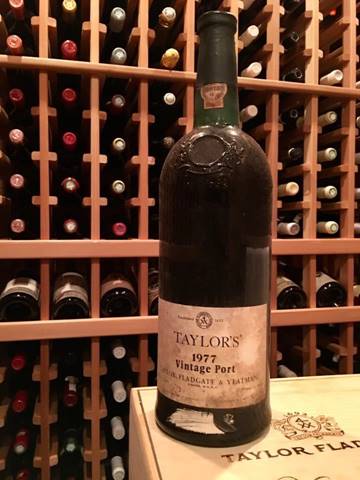 |
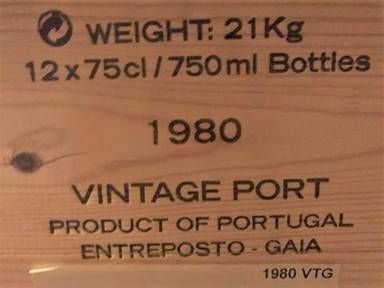
The “Greed” decade of the 1980’s – Historically speaking, some of the major events worldwide, saw the early days of computer technology going mainstream. The USA Hockey Team won Gold in the Olympics, fallout from the Chernobyl disaster was horrible inside the USSR, culminating with that Republic toppling when the wall came tumbling down and the Cold War finally ended, MTV became a big deal, the Iran Contra Affair was the scandal of the day in the USA, conservative politics and wide spread capitalism became the global norm again, the disease known as HIV/AIDS hit many countries, John Lennon was murdered, the Pope and US President were both shot, the Brits defeated Argentina in the Falkland Island war, NASA’s Challenger space shuttle exploded killing all aboard, Reagan’s “Just say no to drugs” campaign began and the Environmental movement took hold. But possibly the biggest news was made as Prince Charles wed Diana Princess of Wales. So much global controversy, for a mere ten years.
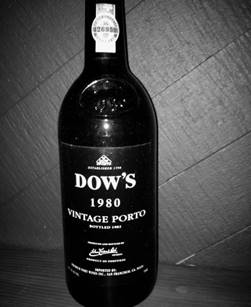
From a Vintage Port standpoint, we are mostly speaking of 1980, 1983 and 1985 as the big guns of the decade. I’ve long been a big fan of the 1980 vintage, as it offers great value and received little praise from Port pundits: Sandeman, Warre’s and Ferreira were over-achievers from that vindima and all three show finesse and elegance and have the solid backbone to continue to drink very well. I’ve had several of each in recent years and they are still relatively youthful at forty years of age. But if you are seeking out the top 1980 Vintage Ports, for my money the Symington family stable of VP’s owned the vintage. We can argue all day which is better, Dow’s or Graham’s; but suffice it to say, both are beauties today and you can’t go wrong with either, as these are the TOP two of the 1980 class. Gould Campbell and Smith Woodhouse are both stunners as well. I have current tasting notes on some of these, in this newsletter.
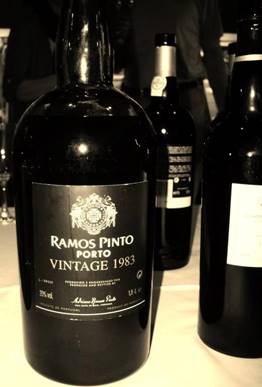
There has long been disagreement amongst VP aficionados as to which is the better vintage, 1983 or 1985. Early on, I was in the camp that supported 1983, but in the past decade to fifteen years, my opinion has changed and I have embraced 1985. I believe the best 1985’s surpass the top half dozen 1983’s and even looking deeper afield for both vintages, the 1985 has greater bandwidth and more youth today. Nothing is wrong with 1983, but they are maturing with more rapidity than 1985’s from my experience. I purchased all my 1983’s in DC, Northern Virginia and CA in the years of 1992-1994 and paid $19 apiece for the vast majority of them.
I have also consumed nearly all of them and have less than a case and a half left, out of nearly a dozen cases purchased from the ’83 vintage. I drank them all as youngsters throughout the 1990’s and the following decade, as I never felt that 1983’s were going to make for old bones.
For me, Cockburn’s is the best 1983 VP … when bottles are correct, or nowadays if consumed within an hour or three of opening. This is the bottling with the most significant issue with cork taint of any VP I know of. That said, the secret is to open and decant for sediment and drink up soon thereafter. IF the TCA is going to ruin your day, it is almost always going to become obvious after 4-5 hours of decanting, unless it hits home immediately upon opening. I’ve cut out that regime long ago. I have owned three cases of this Cockburn’s and when clean, (60% of the time from my own bottles) it is the best of 1983 and is relative young for 37, today. The SFE has the top VP’s from this vintage and excluding bottle variation, Graham’s is a head turner and Dow’s is a Lana Turner (when she was young, please, forgive my OLD movie star reference).
Additionally, the 1983 Ramos Pinto is one of their finest VP bottlings and I wish I had more than just a troika left in the cellar. Gould Campbell is also fabulous in every way, and Smith Woodhouse is quite good. Few will last more than 15-20 more years and not a single 1983 is still improving today. Some are on a very gentle and generous plateau, and will drink well during their early years of maturation.

1985 is a vintage that some critics were unsure about in the early days after the harvest. It was the first vintage that I purchased on release, as the Port bug hit me in 1983 with 1963 Sandeman’s … you all likely know that story. Richard Mayson wrote about the 1985’s in his books, mentioning there was a significant issue with volatile acidity. I’ve not tasted nor smelled VA in any 1985’s recently. The Fonseca is clearly my favorite of the vintage, (and decade) and Graham’s is right there too. Both are fantastic Vintage Ports, sitting at the top of the vintage class. Moreover, there are many 1985’s in the 90-94 point range from this fine year; the most consistent of the decade. They are aging beautifully. I was not a big fan of the Taylor’s when it was growing up, but over the past decade, it has really turned the corner and become a very respectable Port. The cross-section of Ports in the top 10 of 1985, certainly have a long life ahead of them and should drink well when they reach their 60th birthday, the top few, even a few years beyond that.
The un-declared 1987 vintage has a few standouts, but very few. Both the Graham’s Quinta dos Malvedos and Taylor’s Quinta de Vargellas are at the apex of the vintage. For my money, the Vargellas is unquestionably the best of the 1987’s and my second favorite Vintage Port of the entire decade, only bested by the 1985 Fonseca. Your mileage may vary, but I bought in early and often and still have just over a half case, while opening three bottles in the past four years. Solid bottles of the Malvedos are scintillating too, but it’s been nearly a half decade since I’ve had one. Fonseca Guimaraens is another good performer and above most others from 1987, but I’ve never had one that elicited a “wow” after tasting it. One occasionally comes across 1982 Vintage Ports, as many were declared (not generally, but arguably a “split declaration” with 1983). Nowadays they are scarce and most likely they have either been consumed or remain deeply planted in wine cellars. The best Single Harvest wood-aged Ports come from 1982 and 1985, but 1987 is also seen, and offers good value for money and they are still relatively young.
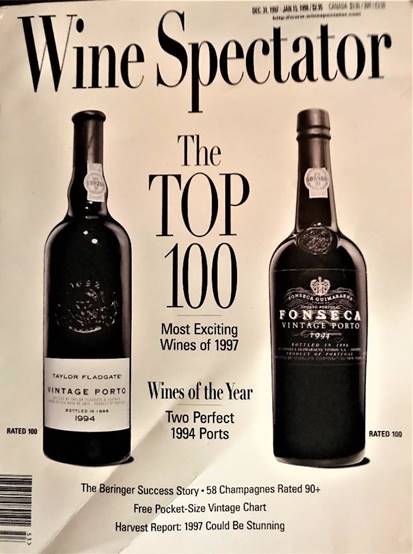
Yes, I’ve kept my Jan. 15th 1998 copy of WS all these years!
The “Dot-com” decade of the 1990’s – The biggest art theft in history took place at the opening bell of the decade, along with the launch of the Hubble telescope, the Boom Box was born and so was the bungee cord, a dynamo known as the Internet went mainstream, a war called “Dessert Storm”, a Patriot was actually a missile, the murder of Rodney King, Seinfeld phenomenon, American’s learned where Waco (TX) was, Nelson Mandela became President of South Africa and Apartheid became a thing of the past, OJ was no longer just a breakfast juice, Princess Di died tragically in a tunnel, Michael Jordan became a global icon, Grunge and Rap became part of the mainstream music scene, Monica Lewinsky’s famed blue dress fit Bill Clinton’s most famous lie, Toy Story, Pulp Fiction and Titanic changed the history of film and at the end of the 1990’s the Euro took over as one of the most important currencies in the world.
The Vintage Ports had four top notch years: 1991 and 1992 were a split declaration as SFE and TFP wound up on either side of the debate, respectively. I don’t believe either one was wrong. On the other hand, they both chose what was the better year for their particular stable of Ports. There’s no denying the amazing quality of Graham’s, Dow’s, Warre’s and Gould Campbell, while Smith Woodhouse and even Vesuvio reached significance with the declaration of 1991, which was Quinta do Vesuvio’s first foray into the big leagues with “Douro bake” no longer a factor. Taylor and Fonseca, well I’ll let you choose which was the better Port between them. I love both from 1992. If I had to pick a single SQVP from either year, it would have to be the excellent Vargellas in 1991; one of the best for sure.
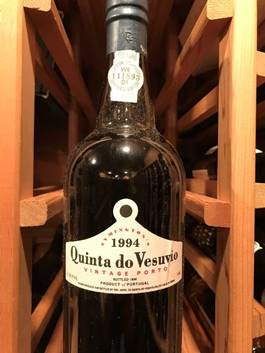
But then came 1994, and it is marked by David Guimaraens’ magical duo of Fonseca and Taylor’s in what most say was his very first vintage. David disagrees and says that he was the winemaker behind the 1992’s too. Either way, to launch 1994 with two VP’s that were given co- Wines of the Year (1994) and 100 points each by the Wine Spectator, is an unprecedented achievement. Peter Symington was responsible for an impressive array of Ports too; including the phenomenal Quinta do Vesuvio, which reached top-tier status with the amazing 1994 Vintage (emphasis on “amazing” as this SQ property began producing VP in the 1989 vintage). 1994 was so impressive that it literally changed the public’s perception of this venerable property and brought its Port image to prominence. Other Symington family Vintage Ports that are absolutely mind-blowing today are the Graham’s, Dow’s and Warre’s, with Gould Campbell and Smith Woodhouse right on their heels. Ramos Pinto, Cockburn’s, Sandeman and Ferreira were also decadent, although a notch below some of the aforementioned bottlings. Quinta do Crasto was another SQVP that declared their very first Vintage Port and the 1994 has just kept improving all these years and is now at peak, but so elegant and timeless. Really, it was hard not to make a Vintage Port that excelled from this year. Quinta do Noval is a veritable knockout and the Quinta do Noval Nacional was the first Vintage Port that I ever scored a perfect 100 points. It was also the inaugural effort by Christian Seely, who was the MD and winemaker alongside long-term Noval veteran, António Agrellos back then. It was the first and only time in history that America purchased more Vintage Port than did the UK. Additionally, to this day, the 1994 LBV’s by Quinta do Noval, Quinta do Crasto and Pocas are the three best I’ve ever tasted.
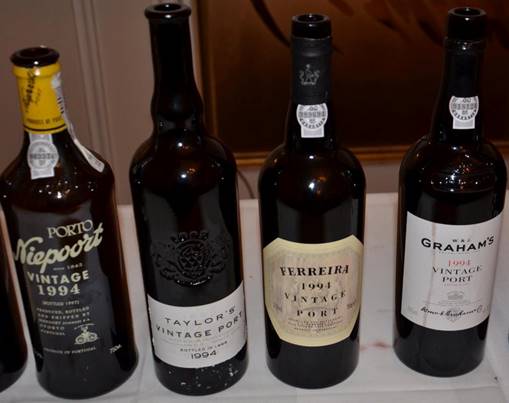
1997 came on strong, deemed an exceedingly tannic vintage upon birth. Yet it’s been all but forgotten and rarely mentioned by wine media or talked about on Port forums. It was very painful to assess as an infant, and early on, showed massive concentrations of fruit and the unfriendly tannic structure was astringent and about as much fun as drinking grape Velcro. That said, it was the year in which some in the Port trade supposedly moved to make easily approachable young VP’s. Sandeman for example, created the Vau Vintage with their 1997 and (Niepoort created Secundum), while Vau has emerged over time, it was still a tannic beast and not all that approachable, for my palate when it was pre-release. It was also the first year I met George Sandeman, as he poured me a glass of 1955 VP when he came to Seattle. That was also the year that Bartholomew Broadbent spearheaded his 1994 inaugural Vintage Port, which debuted in Vancouver. Initially he had no plan to release it here in the USA.
There are some non-declared years in this decade that deserve honorable mention, but the harvest of 1993 produced nothing of value due to rain destroying the fruit at harvest. 1995 was quite worthy, but coming directly on the heels of 1994, it wound up being overlooked. Yet there are several smashing VP’s and my favorite of the 1995 SQVP’s is definitely the very first ever Taylor’s Quinta de Vargellas Vinha Velha. Nonetheless, there are a handful of other excellent Port bottlings such as Vesuvio, Fonseca Guimaraens and Souza. 1996 was pretty much an unknown year for Port, but if you ever get a chance to try the Quinta do Vesuvio, you owe it to yourself to see the innate beauty of this Port which Vesuvio lovers horde to this day. 1998 was the year in which robotic lagares were introduced by the Symingtons, and they made some fine SQVP’s that year.
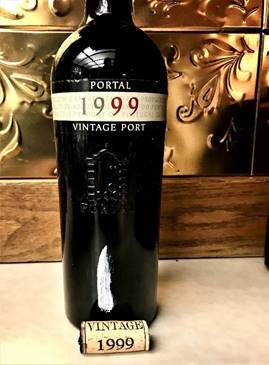
The “Millennial” decade of the 2000’s – Let’s start with Y2k, the plane downings of the Twin Towers and other 9-11 horrors, Saddam toppled during the War on Terror, Afghanistan War, Friendster – Myspace - Facebook and other un-social media came into being, the global economic crisis and banks too big to fail, Indian Ocean earthquake and tsunami, Barack Obama the 1st African American President elected in the USA, Global Warming … ok I believe this has been depressing enough, with one exception; but onto the Ports!
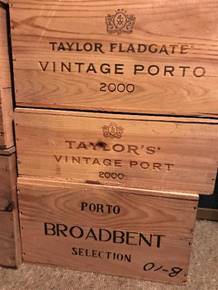
The photo above doesn’t show the cases of Taylor’s Fonseca, Noval or Niepoort, because they are all full and these are not, sitting in a part of my Port “paraphernalia museum.” Without generalizing too much, the quality range is narrower and higher in 2000 than in most of the recent past vintages, going back to 1991. There were a few recent technological advances and viticultural improvements in the Douro, which helped the overall wine quality during this fifth century of Port production. Robotics is just one example, Aguardente another. Unquestionably, the 2000 vintage has shown many Vintage Ports to possess massively concentrated fruit, pungent aromas, remarkable "grip" and solid structure overall. Some are exceptionally well- balanced wines which will grace the tables of our children if not our grandchildren. The fact is that 2000 is a very special vintage for Port and not just because it ended with triple zeroes for the first time ever, or that it was the first vintage of the 21st century. It is a vintage that should be a part of any serious collector's cellar. The 2000 was finest young Niepoort I had ever tasted at the time and while I did not create Roy’s Top 10 List for a few more vintages, this would have been my #1 back then, as it not only had the highest rating of any from 2000, but in a head-to- head blind taste off with Richard Mayson, Dirk Niepoort, Nicos Neocleous and a few others … the Niepoort beat out the next best VP, the luscious Fonseca by a WIDE margin, in May 2003.
Both are incredible and if you can only afford two bottles, one of each, thank you! The best of the rest are: Nacional, Quinta do Portal, Quinta Vale d. Maria, Quinta do Noval, Dow’s, Graham’s, Taylor’s and Vesuvio. They’re the winners from my point of blindness, when tasting through about thirty of them. 2001 was also a very good year indeed and in my opinion, had 2000 not been generally declared … then 2001 would have been. The little known 2001 Quinta do Noval Nacional is spectacular, really a stunning beauty. In the next tier, Graham’s Quinta dos Malvedos and the Taylor’s Quinta de Vargellas topped all of the other 2001’s I have tried. But worthy of exploration and reasonably priced drinking today are: Dow’s Bomfim, Fonseca’s Panascal, Vale d Maria, Warre’s Cavadinha and Vesuvio round out the top of the heap.
The 2002 on the other hand, was a complete wash out that looked near-perfect just prior to the harvest. Torrential rain destroyed the grapes that were not picked early, but some producers did manage to select and pick before the deluge and so, there are a few decent Vintage Ports … the Quinta de Vargellas and Quinta Nova are by far the best I have tasted; followed several points lower by Quinta do Noval’s Silval and Quinta de Roriz. There is little need to seek out the Magalhaes, Quinta da Revolta, Quinta do Estanho, Rol Roi, Ramos Pinto’s Ervamoira or Vale d.
Maria. I am sure there may be others and it is my daughter’s birth year, so I’d love if there were more, but the rain washed them off the radar. Speaking of her birth year, while Taylor’s Vargellas was produced, and one of the very few 2002’s I purchased, (only one by the case) only six packs were produced. It is my belief that this was the sole 12-pack in OWC that was produced; so my daughter is very lucky. When this arrived at home, I was so thrilled having been able to get a birth year Vintage Port in OWC for Taylor to inherit; when I brought her into my wine cellar to show it to her, her response was, “So what?” It made me want to pop a cork and drink one directly from the bottle right then and there, but after she walked out, I just sat with my head in hands and moped for a bit. 🙁
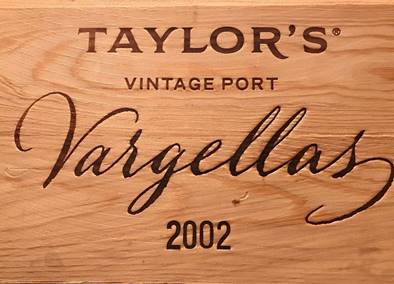
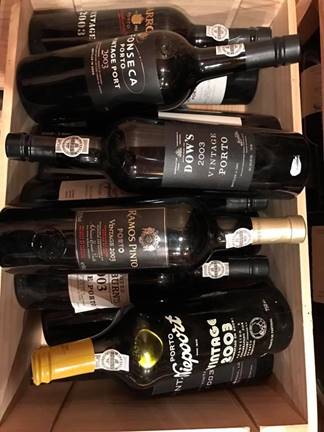
2003 was the next classic declaration. I was impressed by overall extraction levels of the 2003 VP’s. The top wines were extremely dark with saturated, inky colors. Nonetheless, there were certainly quite a few Ports from this vintage that had monstrous grip and mouth puckering tannins. Many of the ’03 Ports had nicely delineated structures to them (after they had time to evolve), with riper tannins that were more similar to 1992 and 1997, than 1994. The mouth coating tannins tended to sneak up late in the game and didn’t let go, but again there were fewer examples of this style in 2003 than the “fruit forward” style. Furthermore, given that Europe suffered through such an extremely hot summer, the Douro River Valley growing region typically experiences very hot summers and therefore the 2003 season was not atypical in that respect. Fortunately, as is the case with many of the finest Port vintages, there was just enough rain during June and July, with steady showers late in August just prior to the beginning of the earlier-than-usual harvest. Unfortunately, a “now extinct” governmental regulatory group decreased Port harvest totals by nearly 1/5th of the production of 2002, due to surpluses that were still on hand from that dismal and disappointing vintage. Overall, production was at least 25% below that of the 2000 vintage, which is a very significant difference. Adding to this complex situation, vineyard yields were quite low in 2003, which further exacerbated the situation and reduced the overall crop size.
This is a mixed blessing, with the upshot being the nourishment given to the surviving clusters, which resulted in greater concentration and excellent degrees of residual sugar within the grapes. The downside was that acidity levels in some cases, had to be corrected more than in any other recent vintage. Due to the shortfall in production levels, price creep was noticeable. To cut to the chase, overall, I prefer the 2003s to the 1997s and believe they will possess some of the finer qualities of both the 1994 and 2000 vintages, to use recent historical comparisons. But the way I saw this from the very beginning, the 2003’s are to the 2000’s similar to the way 1966 was to 1963. More tannins and structure for the 2003’s and 1966’s and as we have seen with these two older vintages, there’s no question as to which has turned out longer lasting, more than a half century later. I am a huge fan of 1966 as anybody who knows me, realizes. While 1963 will always have a warm place in my heart, I seek out the 1966 Vintage Ports and am only opening 1963’s for special tastings or celebrations and not replacing them except on rare occasions if purchasing from someone I know. Of the 47 Vintage Ports from the 2003 harvest that I originally evaluated, the best of show were (in order of preference): Vesuvio, Fonseca, Croft, Niepoort, Noval, Dow’s, Nacional, Quinta do Portal, Taylor’s, Osborne, Smith Woodhouse and Graham’s. All had achieved a minimum score of 94 to make it into that grouping. The two at the very top, Quinta do Vesuvio and Fonseca had been assessed at 98 points.
Fourteen years ago, (2006) I wrote this about the 2004 vintage:
“As the renaissance continues in the Douro Valley and Single Quinta Vintage Port (SQVP) is released with regularity, the distinction becomes less clear, between “classic” vintages (declared on average, three times per decade) and SQVPs and “second labels” (such as Quinta do Portal and Graham’s Malvedos, respectively) which are released with far greater frequency.” … “While the larger groups in the trade stated unequivocally that they’d be releasing their SQVPs, only the smaller producers were willing to bottle “classic” Vintage Ports from the 2004 vintage, coming on the heels of the 2003. While a few felt that the time had come to forget about concerns of “split declarations” and stated that declaring just three times a decade, “is a thing of the past.” This may be worth exploring further in the future, to see whether the tradition of declaring vintages (3x per decade) fits in with today’s Port buyer’s view of the marketplace and the Port trades long term position on these specific traditions.”
Looking back … quite prophetic re: where we are today! The beauty of the 2004 vintage is the symmetry these VPs deliver on the palate as well as the “approachability factor.” Nearly half of all the 2004’s I tasted, won’t make for old bones, but will make for very enjoyable drinking while they are young. Vintage Ports at the top of the list from this under-appreciated year (2004), made some of the greatest DOC Douro still wines ever, are the incredible Warre’s Quinta da Cavadinha which topped my list with 95-97+ points. Vargellas Vinha Velha 94-96 points. The next three all scored 93-95; they were Quinta de Roriz, Dow’s Quinta do Bomfim and Graham’s Malvedos. The final VP in my top half dozen, was Quinta do Portal.
I also reviewed another even better vintage for Port wines, 2005. In 2007, I wrote:
“Consolidation persists within the Port trade’s “Big 5” as they seek out new opportunities to develop depth in their real estate holdings and through the procurement of quintas, vineyards and brands that are being added to their stables. It must be a nerve wracking time for smaller Port companies who do not possess both quality products and positive cash flow. Darwin’s
“survival of the fittest” theory is playing out in the board rooms in Vila Nova de Gaia and the weak are perishing. From where I sit, small family operated Port companies that have either run into financial trouble or receive an offer they can’t refuse (to relinquish control); often times the Ports produced by the new owners will improve in dramatic fashion and rather quickly at that (e.g. Noval, Croft, Burmester). The 2005 vintage shows that there is a counterbalance to consolidation; with continued growth in numbers and improvement of the independent SQVPs along with the sustained increase in the quality and popularity of the Douro table wines being produced today. The Douro was fortunate, as 2005 introduced the third consecutive high quality harvest and both the DOC wines as well as the Vintage Ports benefited.”
I am not going to take more of your precious reading time, but suffice it to say, here are the 9 best, the top three of which had 95 points in order of preference: Barros, Quinta do Vesuvio and Croft. The next six had scores of 94 points also in order: Quinta da Romaneira, Graham’s Malvedos, Niepoort, Kopke and Noval’s Silval.
Sorry, but while I was in the Douro twice in 2006, once just to check the damage to Douro vineyards that took place based on a hailstorm that did very significant damage to some properties in the Cima Corgo on June 14th that year. I arrived a few days later and then wound up staying for the majority of the FIFA World Cup that summer, in which Portugal went all the way to the semi-finals for the first time since 1966, (40 years prior) and wound up placing 4th. That was worth hanging out in the Douro, along with lots of beer and Port. Yes, really … I do drink beer. I returned for that year’s Port Harvest Tour and the first time ever treading on grapes ensued, at Quinta do Vesuvio with many close friends. None of us will ever forget it!
2007 brought on another general declaration, bottled in 2009. Mission accomplished with more than 60 Vintage Ports reviewed; six months and 350+ individual tasting notes later in order to complete the task. Back in 2007, it was pretty obvious by the time the harvest rolled around that there was something truly special about the grapes picked. Having been involved with a few harvests by that point, one can sense when the hype is overblown and simply wishful thinking for “the next great vintage.” Or in some years when there is a total lack of enthusiasm. In 2007 it was clear that everybody was seeing, tasting and picking grapes of extraordinary quality and phenolic ripeness. From watching the action at triage tables, treading in lagares and tasting grapes on the vines at several properties and discussing the quality of the grapes that autumn, there was a unique “energy” unlike any other Douro-based harvest I had been around.
According to the IVDP’s Louisa Fry who checked this for me in early November 2009, there were 116 registered Port shippers and producers. Wow! The sheer number of declarations seems to prove this point. 2007 set a record for the largest number of declarations in the history of Vintage Port as we know it. There were several brand new Vintage Ports launched: Duorum and Quinta Dona Matilde come to mind, with their 2007 VP’s and others by existing Port producers, such as the Quinta do Vesuvio “Capela” and Niepoort’s “Pisca” (the vineyard from which Bioma comes today). These two new and exciting projects were launched with 2007 on the label – and both were also produced in the same year as their classic VP.
Unlike some prime wine regions in France, 2007 shaped up to be an exceptional growing season with just enough moisture/rainfall to provide great nutrition for the grapes and long hang times which worked in the favor of the natural phenolic ripening of the grapes. In Pinhão, considered the heart of the Douro, there was actually half as much rainfall in 2007 as measured against the average annual rainfall. The vintage is remembered early on being big, brash and tannic. And not your everyday tannins that are much less astringent today, part of that having to do with the overall quality of the aguardente. Here is a list of my recommendations from the 2007 vintage, in order of preference, topping out at 98 points for the Quinta do Noval and dropping down to 7 for both Quinta do Vale Meão and Niepoort. Dow’s, Sandeman and Pocas weighed in at 96 points. Quinta do Portal, Warre’s, Rocha and Graham’s finished my Top 10 with 95 points.
2008 was a very good year for table wines, but not as much for Vintage Ports. The best of the 2008 Vintage Ports exhibit finely tuned tannins, crisp acidity and fresh, concentrated wild berry flavors. But if you have children born that year, or an anniversary, you are wondering what I’d recommend. So here are my favorites: Quinta do Noval and Fonseca-Guimaraens topped the charts and made excellent VP’s that garnered 94 points each. The following four weighed in at 93 points; Fonseca’s Quinta do Panascal, Quinta da Romaneira, Porto Quevedo and Taylor’s Quinta de Vargellas.
Speaking of 2009, The Fladgate Partnership did declare, but the Symington’s did not. Whether or not they wanted to hold off on a 4th general declaration of the decade and the first to end with a “9” in … more than a century … I can’t say. But what I can, is that the 2009 Vintage Ports all showed a depth of extraction which was remarkably dense and fully opaque. Ripe tannins were commonplace, with good grip, though not as punishing as I noted in the 2003’s at the same stage. The overall quality of 2009 was higher than what I found with 2007 VP’s at the same point in time, and definitely more consistent; but to be fair, I evaluated only eighteen Vintage Ports … so a considerably smaller sampling took place.
The “?” decade of the 2010’s – Maybe it is just too close, as the decade just ended at the finish of last year and I’ve not been able to find any sound reference as to a nickname for the recently past decade. However, I’ll just pass by the historical events as we all just lived through these ten years and get right down to what is a prolific decade and game changer for the Port trade. As to the history, your memory is as fresh as mine, so really there’s no good reason to go over what just took place, seemingly yesterday!
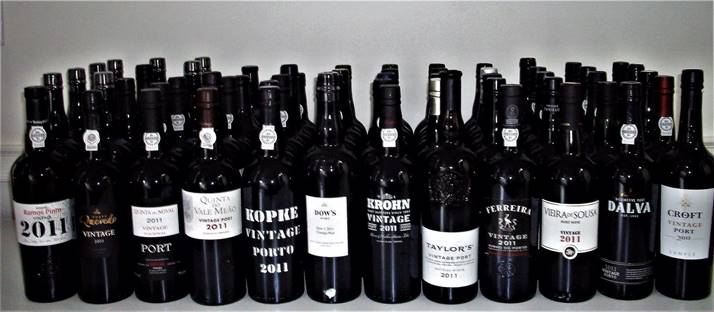
2011 started it all off with a bang and there hadn’t been such a fine year for Vintage Port since 1931, so most decades have not started off this way, with an early “classic” declaration. 2011 was phenomenal in so many ways and likely one of the best young vintages that I have had the pleasure to record, and I first started doing vintage forecasts in the early years of the 1990’s; although with many less bottles than I get to review nowadays. 2011 had some remarkable Vintage Ports and as it is nearly a decade hence, the world has discovered just how great 2011 really is. It is one of the stellar years akin to: 1927, 1945 and 1970 … indubitably my favorite so far in the 21st century, and certainly the finest since 1994. Eighty-eight Vintage Ports were declared, from 50 different producers and I only was able to try 67 of them. The 2011 crop of Ports is exemplified by massively fruited, mellifluous and symmetrically structured Ports from a warm and challenging vintage that ended up superbly. Comparisons to other benchmark years were used early and often as fodder to fortify 2011’s prognosis. To the contrary, I believe several decades hence, the next generation will be comparing their nubile vintages to this one, in order to cement the reputations of their young Ports. 2011 will be their benchmark and for a very good reason. Just try the Dow’s and you will understand how great this vintage really is.
But there are lots of awe-inspiring VP’s and the Taylor’s Vargellas Vinha Velha is a great example, as are the Niepoort and Quinta do Noval and especially Nacional. Alves de Sousa likely made their TOP VP since the company began making Port. While the very first release of Graham’s The Stone Terraces is only matched by 2016/2017, and I have no doubt that the 2011 has possibly even greater potential than it has reached so far as a nubile VP. Taylor’s, Graham’s and Fonseca, along with the regular bottling by Noval are amongst the best of the 2011 vintage!
Next up came the glorious 2015 and both TFP and SFE chose to go with 2016 instead; a move that caused the historic decision to then declare 2017 directly on its heels, but I’ve said enough about that dynamic already. Suffice it to say that the 2015 Vintage Ports will be every bit as good as 2016 with a few exceptions, and only time will tell the full story. My favorites of the 2015 vintage were The Graham’s Stone Terraces … just wow baby, along with Niepoort, Dow’s Bomfim, Alves de Sousa and Dalva … nobody saw that coming … and in addition, Ferreira’s Quinta do Pinto too. Vargellas is in my Top 10 here, along with Quinta Nova de Nossa Senhora do Carmo which can still be found today. Additionally, the regular bottling of Noval was extraordinary and Churchill’s Quinta da Gricha left nothing to the imagination as it was exceptional and likely my favorite Churchill’s bottling ever!
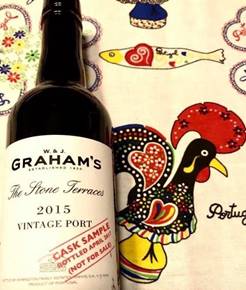
2016 was an incredible but totally different kind of vintage and not without its difficulties during the growing season. While many of the most well-known producers did extremely well in 2016, there were quite a few lesser talked about names that really hit their mark in 2016. I’m not necessarily speaking about breaking into my Top 10 list, yet, focusing on ratings of extremely well-made wines that will offer some buying opportunities, with ratings between 92-94 points.
The pair of Single Quinta Vintage Ports by Rozès and the Rozès VP itself, immediately comes to mind, as did other SQVPs that have delivered within a narrow bandwidth over the years while 2016 was a breakout year for them. Overall, the 2016 vintage scored higher across the board than any prior vintage I have ever assessed. The Graham’s Stone Terraces has been making its presence known and in 2016 was my favorite of this outstanding group, even exceeding that of the Nacional and Dow’s and regular Noval too. Luisa Borges from Vieira de Sousa made her greatest Vintage Port in 2016 and was in the excellent company of Graham’s, Taylor’s, Fonseca and Vesuvio! But then came the 3rd remarkable vintage in a row … the glorious 2017!
2017 is a game changer. So much so, that both the Symington Family Estates and The Fladgate Partnership were willing to declare back-to-back vintages for the first time since the 19th century and broke the mold for all-time, with that historic move. Stylistically, I believe there is greater likeness to 2015 with the 2017 VP’s, even though it was greatly challenged by the earliest vintage ever recorded due to some very early heat spikes at the onset of summer. I blind tasted and rated 74 VP’s from 2017 and found a plethora of exciting youngsters. Some were big names like Niepoort, Taylor’s, Dow’s and Noval; but then came the exemplary if not stellar Nacional, Vesuvio and Grahams and then a slew of names that don’t get mentioned often enough at this level, like: Poças, Sandeman, Quinta da Romaniera, Quinta do Portal, Vale Meão, JH Andresen and Van Zeller’s VZ. A new kid on the block, Croft’s first ever “Serikos” made its mark too. Over the next few decades, it will be fun to see how these evolve and live up to the greatness many early tasters saw in them. From there, my daughter and others of you will have to take over and watch the development of all four incredible vintages from the decade. And with 2018 and 2019 still ahead, while I do not believe either has the potential to be generally declared … the quality quartet of 2011, ‘15, ‘16 or ‘17, I am sure you’ll be able to find something to love!
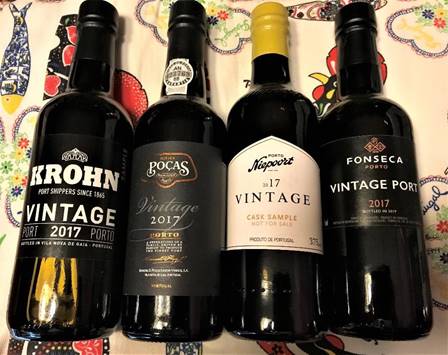

Leave A Comment
You must be logged in to post a comment.